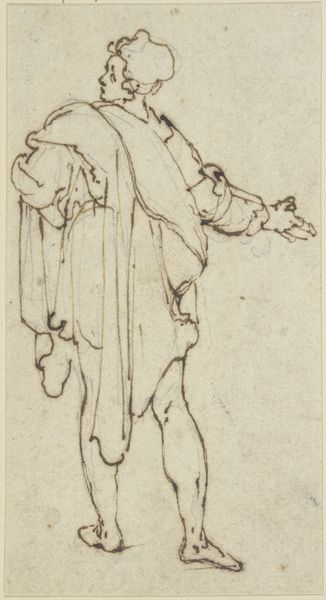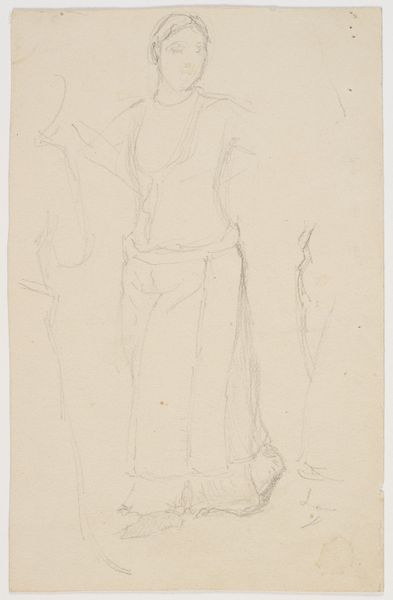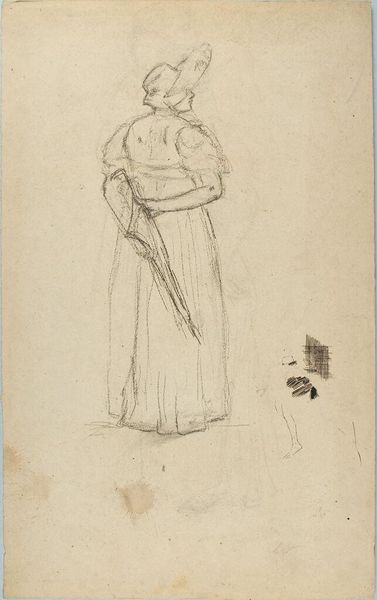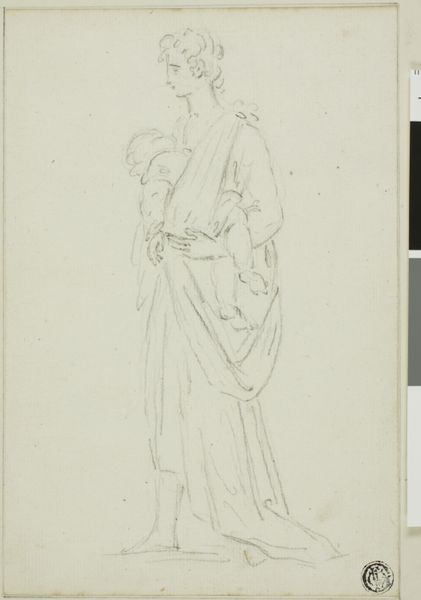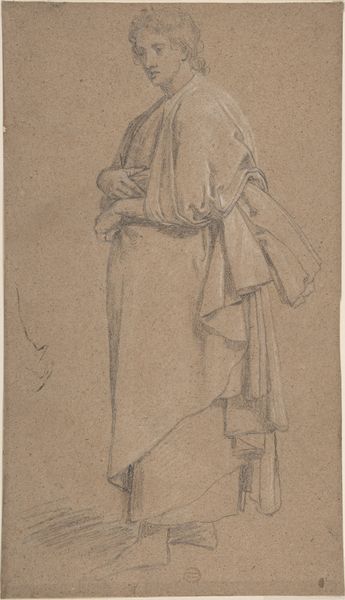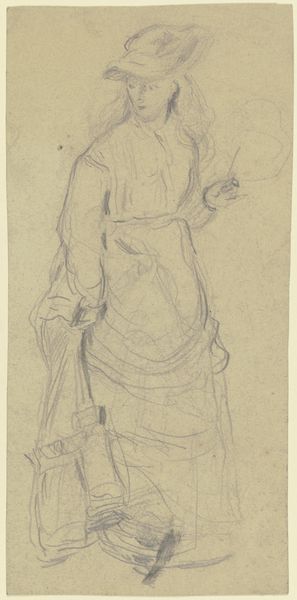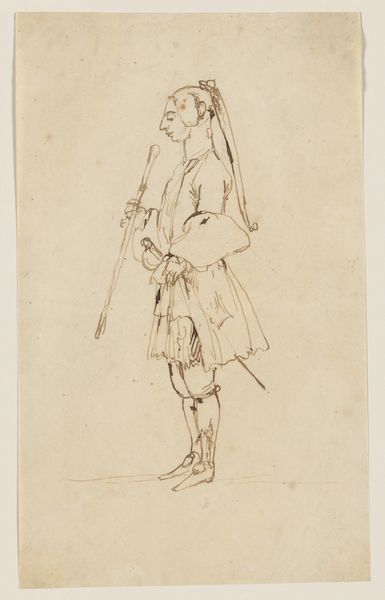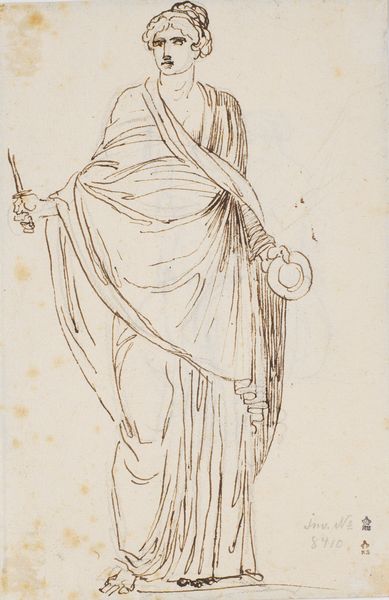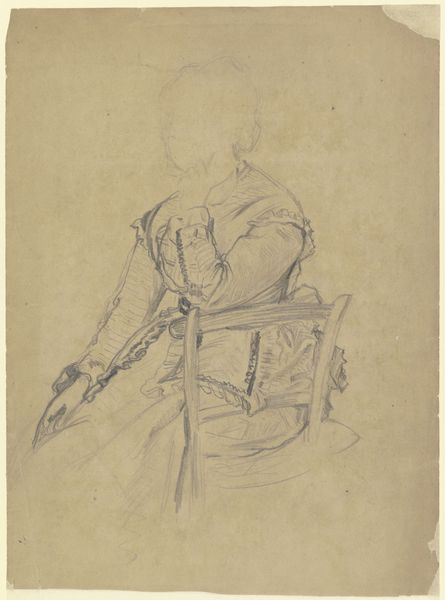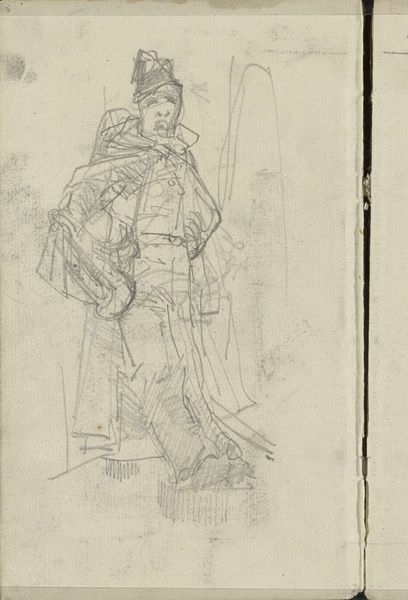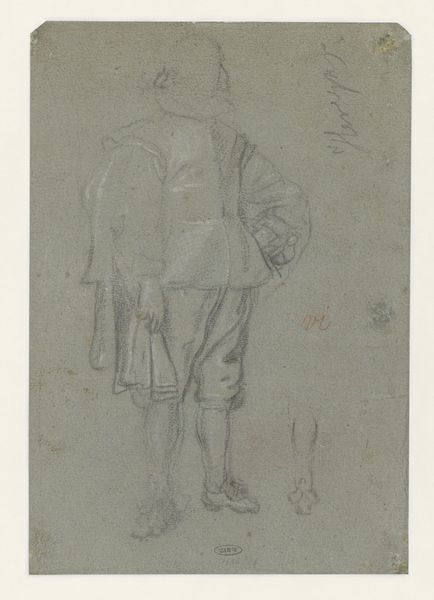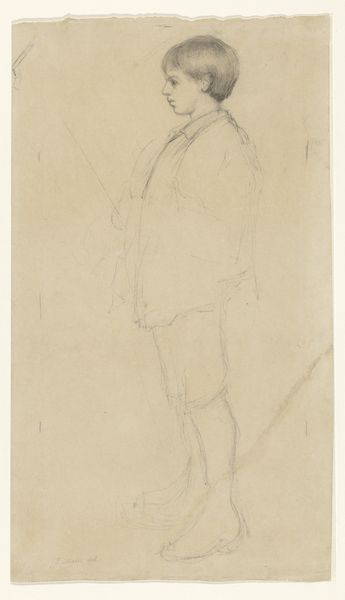
drawing, paper, graphite
#
portrait
#
drawing
#
figuration
#
paper
#
orientalism
#
graphite
#
academic-art
Dimensions: 222 × 118 mm
Copyright: Public Domain
Curator: Well, that’s an intriguing first impression. Shall we delve deeper? This is “Armed Arab Leaning Against a Wall,” a graphite drawing on paper by Charles Bargue. It currently resides here at The Art Institute of Chicago. Editor: It looks unfinished, like a preliminary sketch, almost fleeting. I immediately zoom in on the layering and visible graphite marks. The hasty quality makes me curious about the artist's process, perhaps even the paper's texture and sourcing at the time. Curator: Bargue, an instructor, created such drawings as models. These were reproduced in lithograph for art students and artisans. The Orientalist theme placed this within a broader European fascination. Its availability shaped artistic vision and cultural perspective, certainly. Editor: Interesting, so this was essentially a mass-produced training exercise employing Orientalist themes? Considering the social context of production is important here. What narratives were perpetuated through these reproductions and what roles did power structures play? Was Bargue aware of that social play? Curator: Precisely! It begs the question: what did these drawings accomplish beyond technical skill? How did they shape the collective understanding and perception of "the Other" during this era, not only for artists and students, but the general public as they become ever more disseminated? Editor: The medium – graphite on paper – also suggests accessibility. It wasn’t about high-end materials; it was about affordability and the widespread training in certain skills of academic drawing as labor and standardized teaching. A democratic intent perhaps, if paradoxically harnessed in service of what one might now call a "colonial gaze." Curator: Indeed. Its value, perhaps, isn't in its aesthetic “completion,” but in the way it illuminates the complex interplay between artistic pedagogy, the market for art supplies, and societal ideologies of the time. Editor: Ultimately, this seemingly simple drawing is a portal into understanding artistic training, distribution, and Orientalism's impact on society. Thank you. Curator: Yes, I agree, a lens into understanding artistic conventions, colonial era politics, and a moment frozen in time for posterity.
Comments
No comments
Be the first to comment and join the conversation on the ultimate creative platform.

